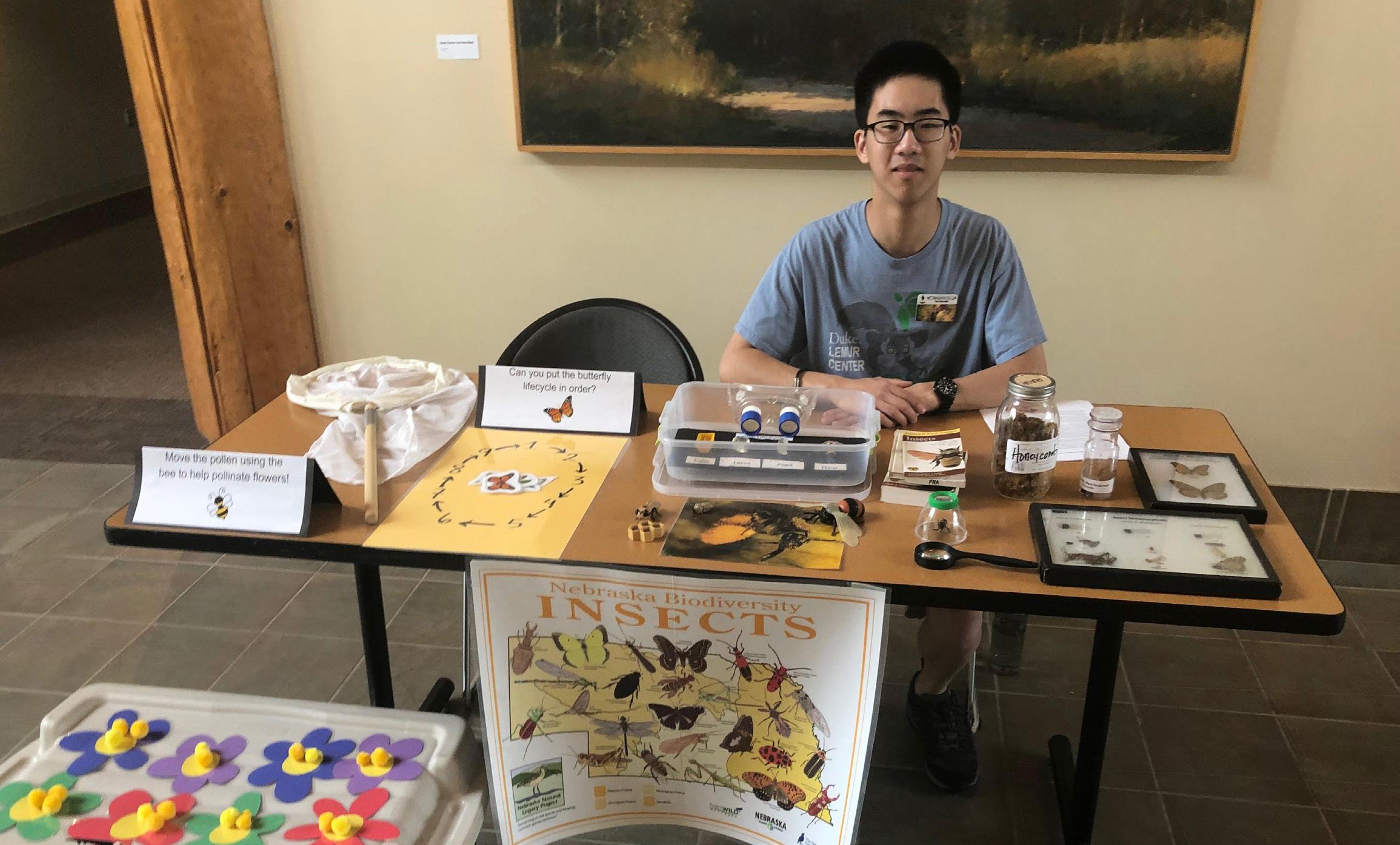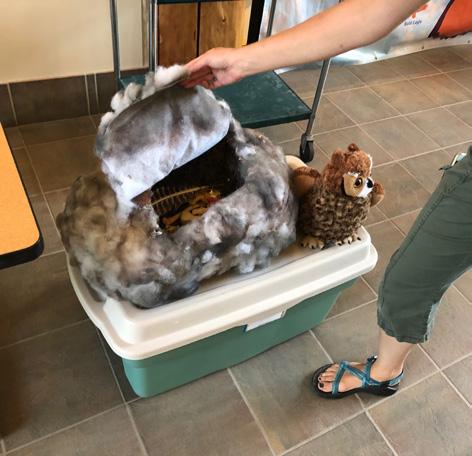
3 minute read
Volunteer Teacher Naturalists Pave the Way for New and Exciting Programs
Volunteer Teacher Naturalists Pave the Way for New and Exciting Programs

Advertisement
The Teacher Naturalist (TN) program is part of the Education Department that is comprised of volunteers ages 19+ interested in sharing their passion for the natural world and others. High school students ages 13-18 volunteer as part of the Teen Naturalist Trainee (TNT) program, an abbreviated version of the Teacher Naturalist program. Teacher Naturalists volunteer to lead or help out with a variety of nature-based educational programming including guided hikes, education stations, roaming interpretation, special events, camps, and family programs.
TNs are trained in interpretation, which allows them to connect visitors to nature in a meaningful way, and inspire visitors to care about and protect the natural world. Below are highlights on a few programs being led by Teacher Naturalists at Fontenelle Forest in upcoming months. Be sure to check out these exciting programs this fall!
GUIDED HIKES Throughout the year our Teacher Naturalists lead several popular guided hikes, including Night Hikes, Birding Walks, Writing Hikes, History Hikes, Dirt Time Hikes, and Senior Hikes. These hikes accommodate visitors with varying abilities and interest levels, from those who would like to go on a gentle boardwalk
stroll in programs such as Birding Walks or Senior Hikes, to those who would like to go on a more vigorous hike in programs like our Night Hikes.
Dirt Time Hikes are a great program for families where children can use their investigation skills to find animal clues such as tracks and scat along the trail with the help of our Teacher Naturalists. Writing hikes and history hikes may suit visitors looking to blend their interests in creative writing or history with nature.
During writing hikes a Teacher Naturalist gives visitors a chance to develop their writing skills, and to celebrate the forest in a supportive community. History hikes have been a long-time favorite of visitors, who get to learn from our Teacher Naturalists about how the land was shaped by glaciers, how Native Americans lived within the forest, and how fur traders and explorers settled in the hills.
FROM SMALL PROGRAMS TO LARGE EVENTS, VOLUNTEERS MAKE THE FOREST COME ALIVE

ROAMING TEACHER NATURALISTS You may notice more of our volunteer Teacher Naturalists on the trails this fall. Our volunteer Roaming Teacher Naturalists will be greeting visitors along the boardwalk and Nature Center trails as the weather cools this autumn, and will serve as not only a helping hand when visitors need directions, but also a source of educational information on forest flora and fauna.
Our Roaming Teacher Naturalists will have various items with them as they travel the trails, including magnifying glasses, field guides, forest artifacts, and quick educational activities. Visitors will gain a deeper appreciation for their surroundings by having Roaming Teacher Naturalists encourage them to look more closely at forest inhabitants – from towering trees to tiny insects!
NATURE CENTER EDUCATION STATION Volunteer Teacher Naturalists are now leading an education station in the Great Hall of the Nature Center where visitors can stop by to learn more about the forest before hitting the trails. Teacher Naturalists

Interpretation stations explore topics like pollination and owl pellets


will engage visitors with rotating monthly themes related to forest ecology, specific flora and fauna, conservation, and history.
This coming fall, we will be diving into Fontenelle Forest history in October, discovering the world of turkeys in November, and bundling up to learn about winter in the woods in December.
Additionally, visitors will have the opportunity to participate in the Biocube Project, an ongoing community science project. Come and investigate the 1 cubic foot Biocubes placed on trails near the boardwalk to observe signs of life and record the number of plants, animals, fungi, and animal clues (feathers, tracks, and scat) along with the help of the iNaturalist app. Visitor data will help us better understand the diversity of life we can find in smaller ecosystems at the Forest and contribute to scientific research helping scientists better understand the natural world.
Jocelyn Harrison Adult programs coordinator

